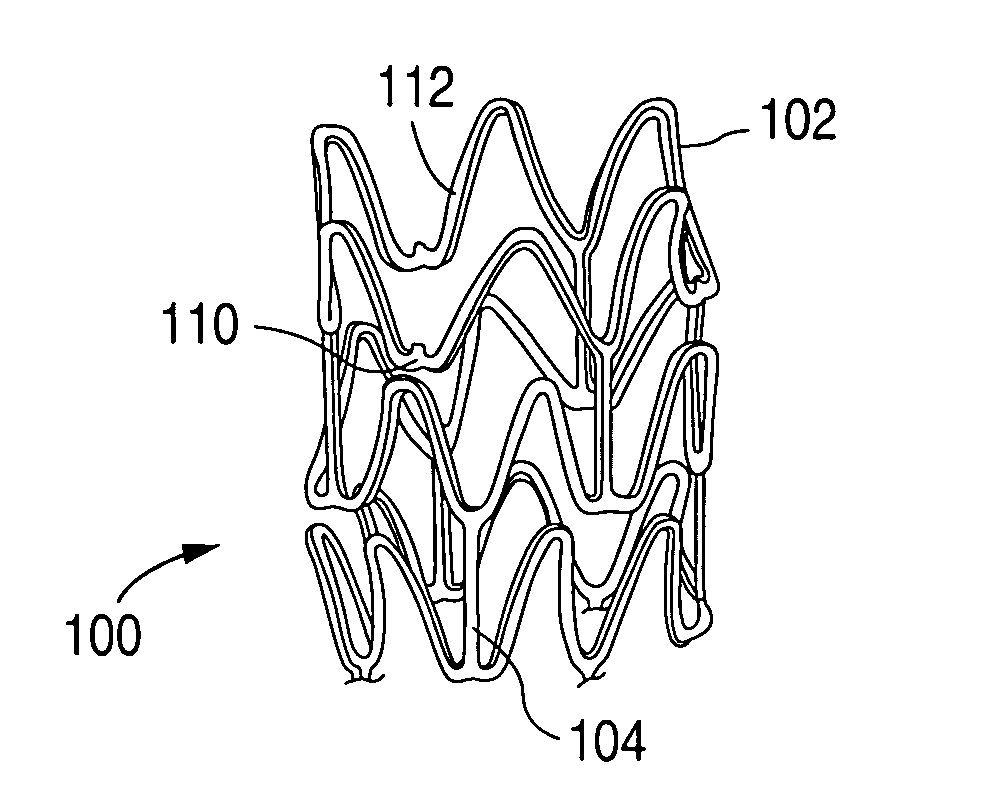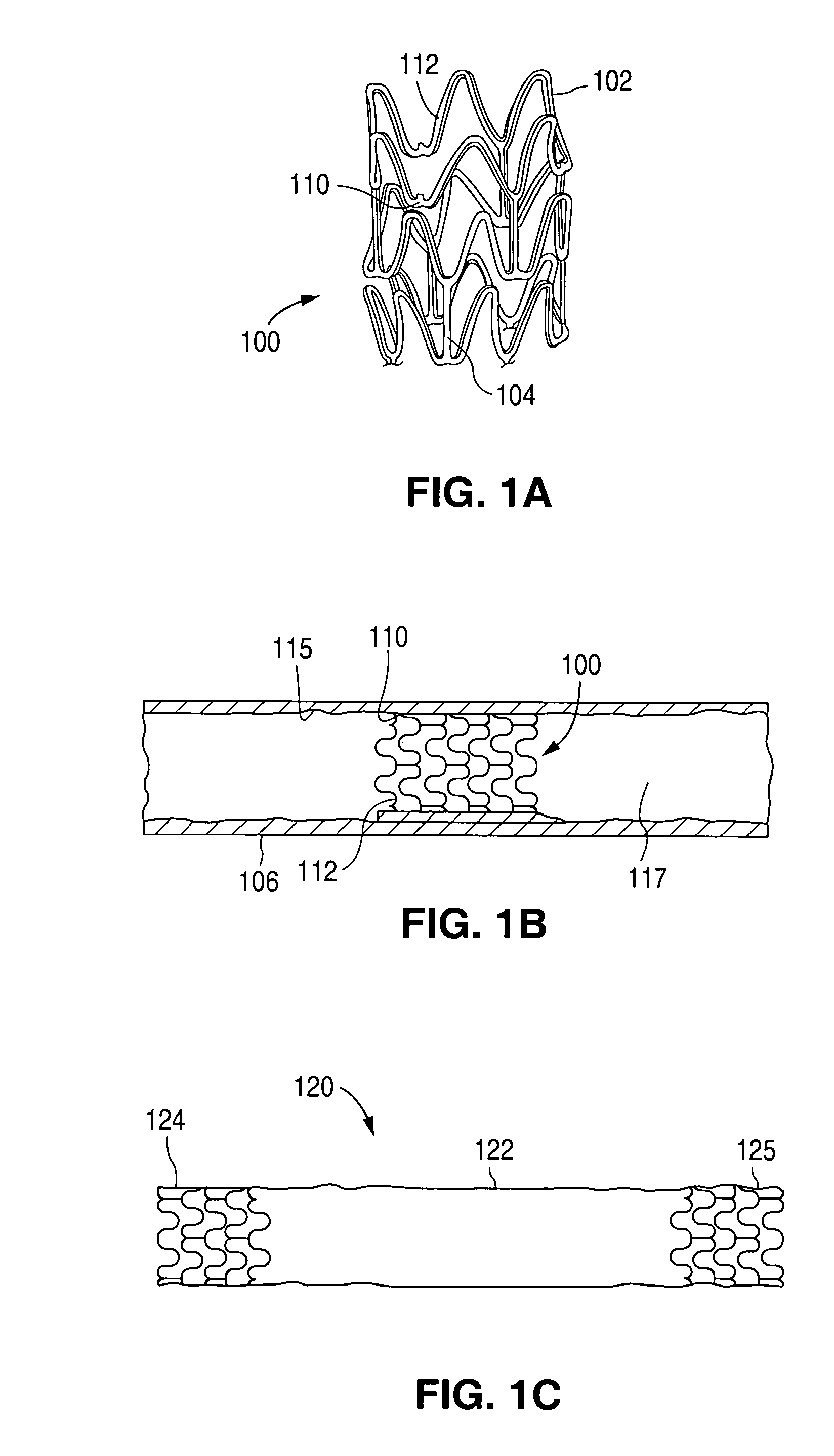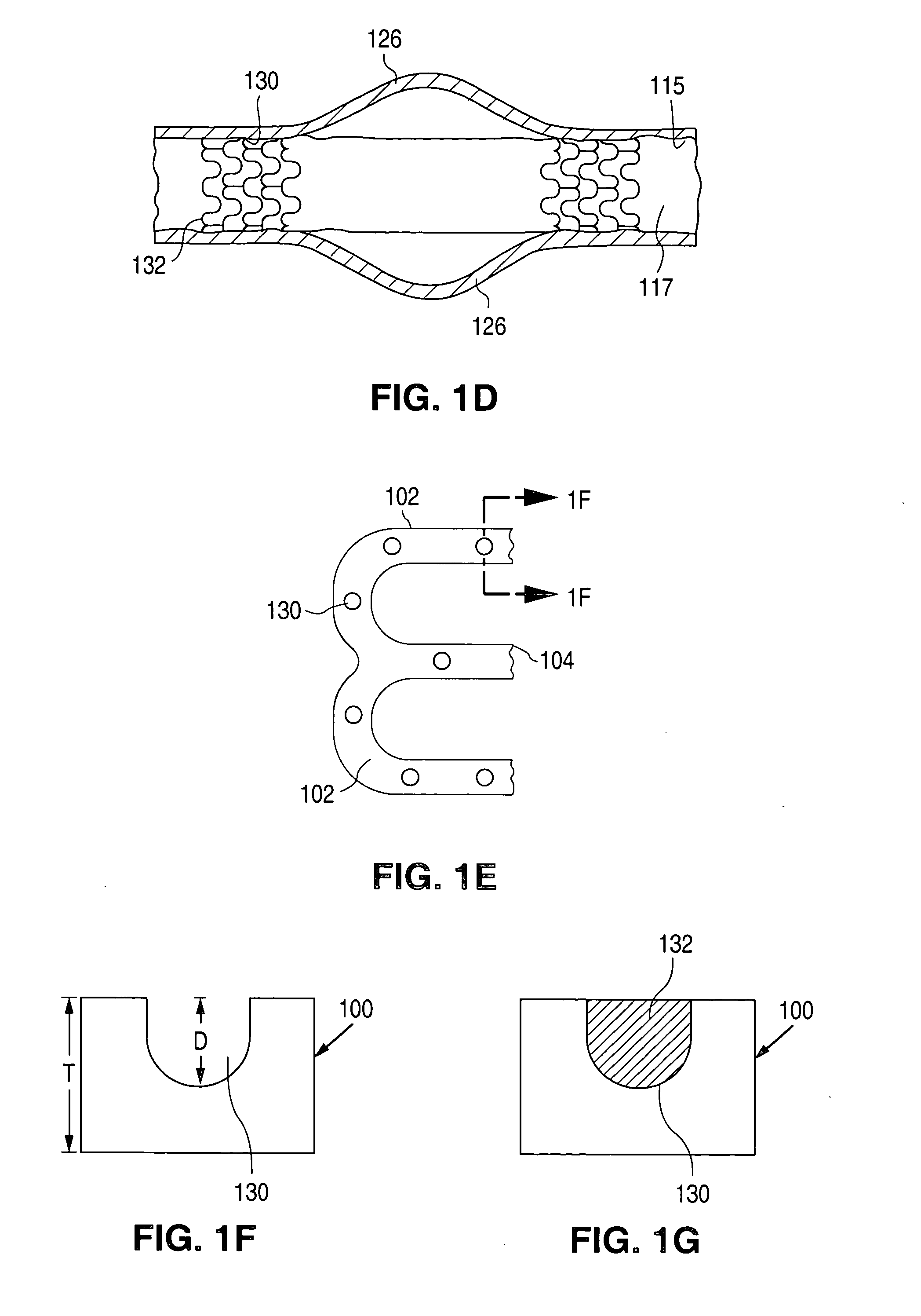Method of making an implantable medical device
a medical device and implantable technology, applied in the field of implantable medical devices surface features, can solve the problems of occlusion of conduits, affecting and intimal flaps or torn arterial linings that can collapse, and achieve the effect of enhancing the delivery of therapeutic substances and high retention
- Summary
- Abstract
- Description
- Claims
- Application Information
AI Technical Summary
Benefits of technology
Problems solved by technology
Method used
Image
Examples
example
Stents # 1-5 were fabricated by cutting, descaling, and polishing a 316L stainless steel hypo-tube as described in U.S. Pat. No. 5,759,192 . The inner surface of stents # 1-#4 were protected by inserting a mandrel, hypotube, or inflated balloon into the interior of the stent to protect the inner surface. The outer surface of each stent was bead blasted, using bead diameters in the range of 10 μm to 50 μm. Stents #1 and #2 were bead blasted at 60 PSI pressure and stents #3 and #4 were bead blasted at 30 PSI pressure, as indicated in Table 1. Bead blasting was done at a distance of approximately 5 cm from the stent. The beads were passed very quickly, in approximately 1-3 seconds, down and up over the stent outer surface. The stent was then rotated 120° and the process repeated twice so the entire stent was roughened. After bead blasting, stents # 1-# 4 were cleaned by immersion in an ultrasonic isopropyl alcohol bath for 20 minutes and allowed to dry. Stent #5 was also cleaned in an...
PUM
 Login to View More
Login to View More Abstract
Description
Claims
Application Information
 Login to View More
Login to View More - R&D
- Intellectual Property
- Life Sciences
- Materials
- Tech Scout
- Unparalleled Data Quality
- Higher Quality Content
- 60% Fewer Hallucinations
Browse by: Latest US Patents, China's latest patents, Technical Efficacy Thesaurus, Application Domain, Technology Topic, Popular Technical Reports.
© 2025 PatSnap. All rights reserved.Legal|Privacy policy|Modern Slavery Act Transparency Statement|Sitemap|About US| Contact US: help@patsnap.com



